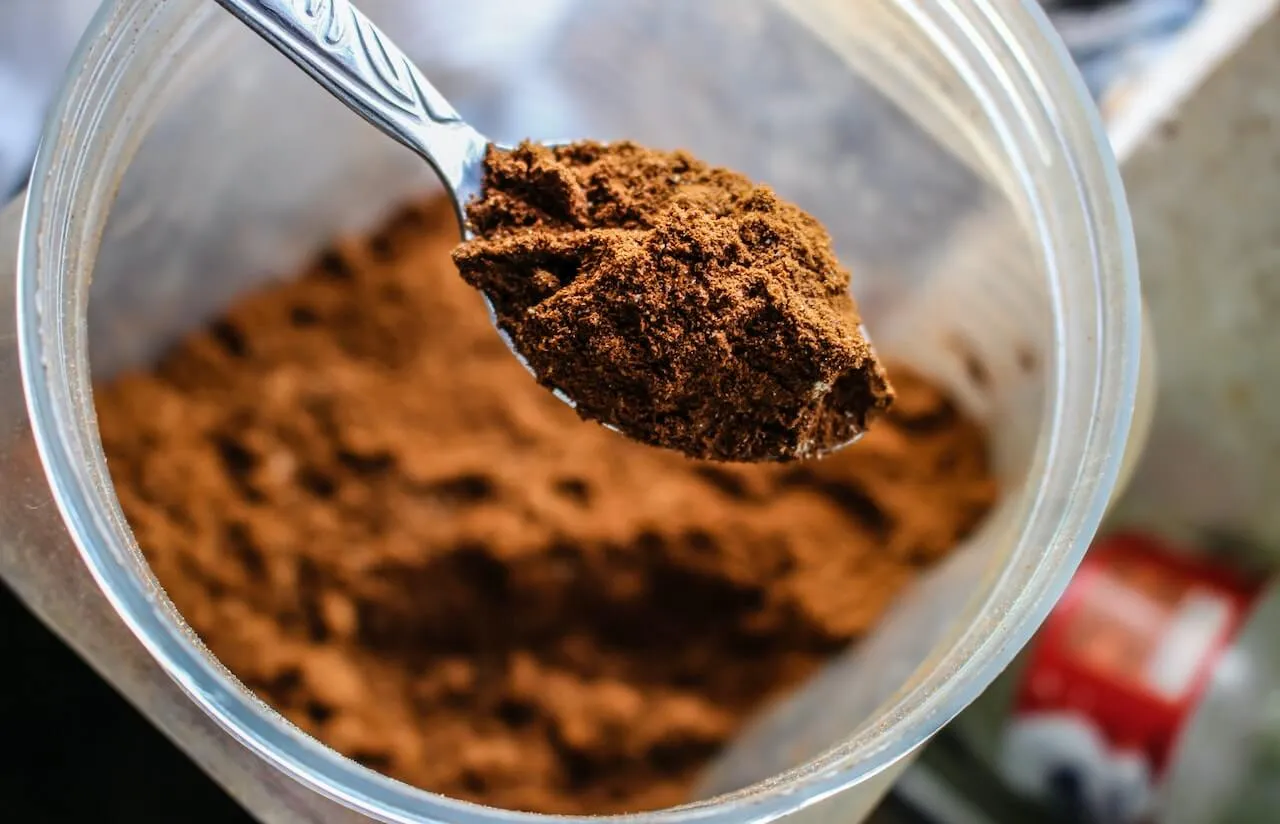Acai bowls have taken the wellness scene by storm recently, captivating tastebuds and social media platforms everywhere. These colorful creations are considered nutritional powerhouses, but do they live up to their hype? Are acai bowls healthy?
Undoubtedly, acai bowls are gorgeous culinary creations, but acai berries can be more than just a food trend. They can be a delicious addition to a well-balanced diet if incorporated mindfully, especially when paired with other nutrient-dense foods in a smoothie bowl. In this article, we have a dietitian’s take on the smoothie bowls that continue to garner so much attention in the wellness world. We’ll explore the nutrition facts behind acai bowls to determine if their health claims align with reality.
What is Acai?
The base of all acai bowls is—yep, you guessed it—acai berries! These berries, while technically a drupe fruit because they contain a pit, are harvested from a specific palm tree native to the rainforests of Central and South America. They’re a grape-like fruit, about 1-2 centimeters in diameter and deep purple in color. Acai berries have an earthy taste; some even describe it as a mix of berries and chocolate.
Fresh acai berries don’t have a long shelf-life, so they aren’t typically available outside of where they’re harvested. However, they’re often exported frozen, dried, powdered, and juiced. You may even see acai berries used to flavor food items like ice cream, candies, and non-food items like body creams.
{{mid-cta}}
The 5 Health Benefits of Acai
Acai berries are touted as a powerful superfood and praised for their vibrant color and versatility, but what does the science say? Good news—acai berries offer several health benefits, including antioxidant and anti-inflammatory properties and cardio--, gastro-, and neuroprotective influences.
Rich in Antioxidants
Acai berries are packed with beneficial antioxidants that help fight harmful free radicals and prevent damage to your body’s cells. Research has shown that acai berries exhibit the antioxidant capacity of several compounds, including polyphenols, flavonoids, and anthocyanins.1,2 We can thank the anthocyanins for acai berries’ dark purple color and their ability to combat oxidative stress in the body. Acai berries also contain other antioxidants like vitamin C and ellagic acid, supporting a healthy immune system and reducing the risk of many chronic diseases.
Potential Anti-Inflammatory Effects
Acai berries also display noteworthy anti-inflammatory properties that can support your overall health and well-being. Rich in antioxidants, these nutrient-dense fruits can help reduce inflammation by combatting oxidative stress. As a result, consuming acai berries may help decrease the risk of developing chronic inflammatory conditions, such as heart disease and arthritis.

Heart Health Support
Heart health can affect many different areas of the body, making it an important consideration when it comes to nutrition. Acai berries are packed with fiber and healthy fats, which have been shown to help support cardiovascular health. The National Center for Complementary and Integrative Health notes that consuming acai berries may lower cholesterol levels in people with excess weight.3
Potential Cognitive Benefits
Research has shown that the compounds found in acai berries may also boost brain function, helping to protect your brain from damage as you age.4 Plus, science has shown that acai has the potential to improve memory function through its antioxidant and anti-inflammatory influences.5
Digestive Health
Digestive health plays a significant role in our overall health, and acai berries may offer gut health benefits when included as part of a healthy diet. They contain soluble and insoluble fiber, helping to support a healthy digestive tract and prevent constipation. Research has shown that acai berry extract can potentially prevent intestinal inflammatory diseases.6
An Overview of Acai Bowls Nutrition
While all acai bowls start the same—with acai berry puree—the rest of the recipe is up to you. And since there isn’t just one recipe to follow, the nutritional value can vary from one acai bowl to the next. The calories, fat, protein, and sugar content depend on the ingredients and serving size.
Some recipes call for more fruit purees, while others call for plant-based milks like almond milk, coconut milk, or soy milk to adjust the texture. The toppings can include anything from granola and frozen fruit to peanut butter and chia seeds. The options are endless. You can add whatever your tastebuds desire!
So much versatility can be a huge benefit or a major downfall to a healthy diet. The freedom to add ingredients according to your preferences allows you to incorporate a variety of vitamins, minerals, fiber, and tastes into your healthy meal. However, at the same time, it's very easy to overdo it and skew your macronutrient intake for the day. So here’s the bottom line: acai bowls can benefit you if you’re mindful of their contents.
For this reason, it’s typically better to make your own acai bowl at home instead of opting for a store-bought option. When creating your own acai smoothie bowl, you have control over the portions, helping you moderate your fat and sugar intake.
For example, six ounces of a pre-made, store-bought acai bowl provides:7
- Calories: 211
- Protein: 3 grams
- Carbohydrate: 35 grams
- Fat: 6 grams
- Fiber: 7 grams
- Added Sugar: 11 grams
When making your acai bowl, you can limit the added sugars and even reduce the calories per serving while increasing the protein provided. Developing a recipe that meets your needs may take some trial and error, but we’ve got some helpful tips to get you started.
How to Make a Healthy Acai Bowl
Making your acai bowl at home can be a fun and nutritious addition to your day. Preparing it at home gives you control over the ingredients and portion sizes, allowing you to reap the benefits of the acai berry superfruit without the unwanted sugar and calories.
Here are a few tips to consider as you build your healthy acai bowl:
Choose the Right Toppings
Most acai bowls contain toppings like fresh fruits, nuts, seeds, cacao nibs, and granola. While all ingredients offer potential benefits, some toppings might be better suited than others to help you reach your wellness goals. If you're trying to improve your blood sugar management, consider adding a protein powder to balance the carb content in your acai bowl. If weight loss is your goal, consider choosing low-calorie toppings and avoiding high-fat ingredients.

Portion Control
Moderation is key when designing your acai bowl. While some ingredients might be nutritious, it’s easy to go overboard and turn your healthy acai bowl into a high-calorie snack. Be mindful of the amounts of each ingredient you add, and consider how they’ll help you reach your health goals.
Avoid Excessive Added Sugars
Limit or avoid added sugars often found in granola, sweetened coconut, chocolate shavings, and other typical acai bowl toppings. Excess sugar can cause unwanted blood sugar spikes, followed by the dreaded sugar crash. Added sugar can also make it challenging to manage wellness goals, such as weight maintenance and blood sugar control.
Opt for Proteins
Acai bowls are a great source of carbohydrates, but you have to be intentional about including protein sources. Adding protein to your bowl can help reduce blood sugar spikes and help you feel fuller for longer. Consider adding high-quality proteins, such as Greek yogurt, nut butter, or protein powders.
When it comes to making a healthy acai bowl recipe, the possibilities are endless. Making your bowl can be as simple as adding ingredients to a blender and topping the smoothie bowl with your favorite garnishes. Try a variety of ingredients or maybe turn to a delicious recipe to spark some inspiration:8
Start with your favorite fresh fruit. You can use blackberries, blueberries, raspberries, bananas, strawberries, or any other fruit you like. Slice your fruit of choice and place it in the freezer. Once frozen, add it to your high-speed blender along with a scoop of Greek yogurt and your milk of choice.
You can use soy, coconut, almond, or cow’s milk. Add the acai puree and blend until it reaches your desired smoothie consistency. Divide the smoothie into multiple bowls and garnish as desired. You can top your acai bowl with granola, fresh fruit, coconut flakes, and chia seeds.
Using a CGM with Signos: Real-Time Data, Backed by AI
Signos pairs a real-time glucose biosensor with AI trained on tens of millions of data points to deliver personalized, science-backed guidance. See exactly how your body responds, and take action.
Learn how it works. Ready to get started? Join now.
Topics discussed in this article:
References
- Laurindo, L. F., Barbalho, S. M., Araújo, A. C., Guiguer, E. L., Mondal, A., Bachtel, G., & Bishayee, A. (2023). Açaí (Euterpe oleracea Mart.) in Health and Disease: A Critical Review.Nutrients, 15(4). https://doi.org/10.3390/nu15040989
- Carvalho, A. V., Ferreira Ferreira da Silveira, T., Mattietto, R. A., Padilha de Oliveira, M. D., & Godoy, H. T. (2017). Chemical composition and antioxidant capacity of açaí (Euterpe oleracea) genotypes and commercial pulps.Journal of the science of food and agriculture, 97(5), 1467–1474. https://doi.org/10.1002/jsfa.7886
- U.S. Department of Health and Human Services. (2020, August). ACAI. National Center for Complementary and Integrative Health. https://www.nccih.nih.gov/health/acai
- Poulose, S. M., Fisher, D. R., Bielinski, D. F., Gomes, S. M., Rimando, A. M., Schauss, A. G., & Shukitt-Hale, B. (2014). Restoration of stressor-induced calcium dysregulation and autophagy inhibition by polyphenol-rich açaí (Euterpe spp.) fruit pulp extracts in rodent brain cells in vitro.Nutrition (Burbank, Los Angeles County, Calif.), 30(7-8), 853–862. https://doi.org/10.1016/j.nut.2013.11.011




.svg)










.svg)
.svg)
.svg)
.svg)
.svg)
.svg)
.svg)
